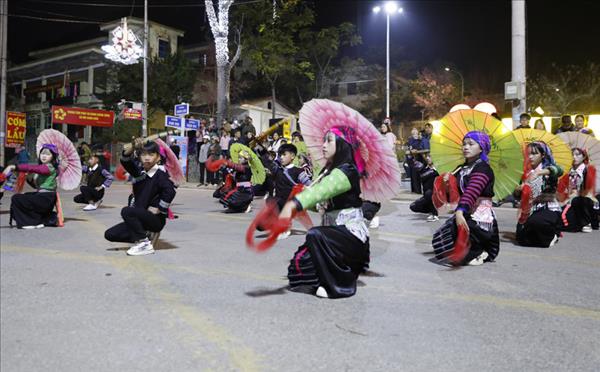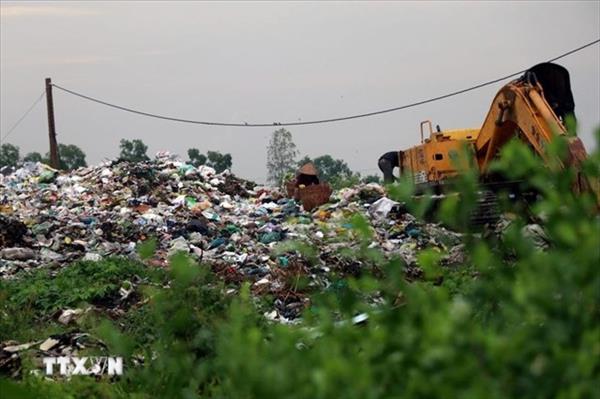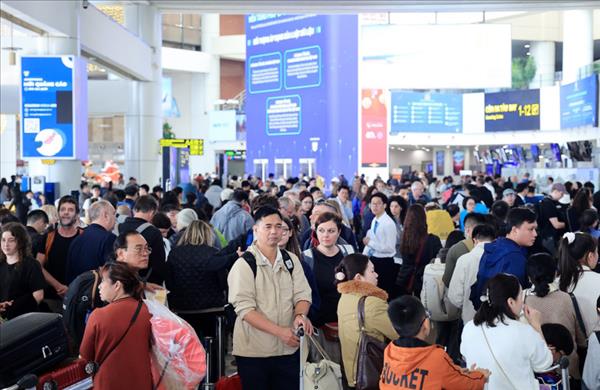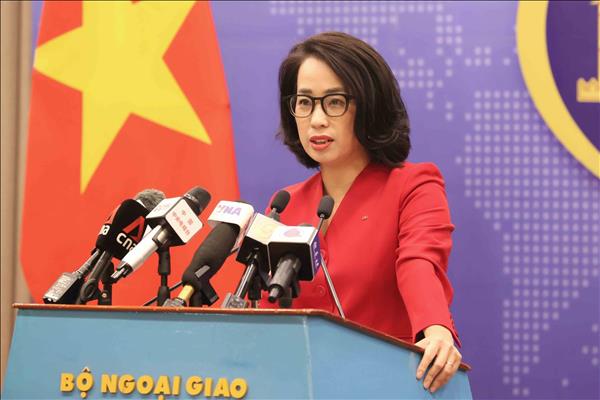Da Nang city has been given the title of National Green City 2017-18 by the World Wide Fund for Nature (WWF)’s One Planet City Challenge programme, making it onto a list of 21 cities from around the world.
Vice Chairman of the municipal people’s committee Nguyen Ngoc Tuan, said the award was a tribute to the city’s endeavours over past decades to commit to sustainable development.
Da Nang, along with other cities in Vietnam including Hue, Hoi An and Dong Ha, entered the One Planet City Challenge programme in 2017 to show how cities can become hubs for creativity, ambition and innovation in dealing with climate change.
The four cites qualified out of 132 metropolises from 23 countries, but Da Nang was finally selected for the award.
The central city had submitted a target of reducing greenhouse gas emissions by 25 percent from 2016, along with plans for solar power development, biofuel use, Bus Rapid Transit (BRT) routes and wastewater treatment.
According to a WWF statement, cities generate 70 percent of the world’s carbon emissions, and the WWF’s One Planet City Challenge was a biennial competition that recognised and rewarded cities for developing infrastructure, housing, transport and mobility solutions to power the global transition to a low-carbon, climate-resilient future.
It said 50 percent of the global population lived in urban areas, and cities would be home to about 6 billion people by 2050.
Da Nang city is giving top priority to high-tech and clean technology investment projects to become a green city by 2025.
In 2012, Da Nang city was selected for an Asia-Pacific Economic Cooperation project along with 20 low-carbon model cities with energy-efficient technologies, smart grids and renewable power generation.
The city had cut 12,000 tonnes of carbon emissions through a pilot project of low-carbon models including battery-powered bicycles, renewable energy, a metro system and BRT.
Da Nang city plans to build its first solar farm covering 6.7ha on the now-closed Khanh Son Landfill at a cost of 5 million USD, supplying 7.7 million kWh per year to the city’s power grid, and reducing nearly 5,000 tonnes of carbon emissions each year.
The city has great renewable energy potential, with a 90km coastline, 2,000 hours of sunlight per year and an average wind speed of 3m per second.
According to the city’s Industry and Trade Department, around 30 percent of the city’s population were using solar power for water heaters, while around 20 five-star hotels and resorts were using solar power water heating systems.
The European Commission (EC) has also agreed to fund the city 415,000 USD to install solar equipment at health centres and schools, as well as research into solar technology capacity and management.
Da Nang city has also been operating 20 battery-powered cars to serve tourists on the Son Tra Peninsula since 2012.
Japanese Mitsubishi plans to cooperate with Da Nang City in the production of battery-powered cars in the near future.
In 2016, the WWF recognised Hue city as Vietnam’s National Earth Hour Capital 2016 as part of the highly selective global Earth Hour City Challenge.
The One Planet City Challenge was designed by the WWF to mobilise action and support from cities in global climate efforts, including the goals now set forth by the Paris Agreement. About 400 cities in the world have joined the programme since 2011.
Vice Chairman of the municipal people’s committee Nguyen Ngoc Tuan, said the award was a tribute to the city’s endeavours over past decades to commit to sustainable development.
Da Nang, along with other cities in Vietnam including Hue, Hoi An and Dong Ha, entered the One Planet City Challenge programme in 2017 to show how cities can become hubs for creativity, ambition and innovation in dealing with climate change.
The four cites qualified out of 132 metropolises from 23 countries, but Da Nang was finally selected for the award.
The central city had submitted a target of reducing greenhouse gas emissions by 25 percent from 2016, along with plans for solar power development, biofuel use, Bus Rapid Transit (BRT) routes and wastewater treatment.
According to a WWF statement, cities generate 70 percent of the world’s carbon emissions, and the WWF’s One Planet City Challenge was a biennial competition that recognised and rewarded cities for developing infrastructure, housing, transport and mobility solutions to power the global transition to a low-carbon, climate-resilient future.
It said 50 percent of the global population lived in urban areas, and cities would be home to about 6 billion people by 2050.
Da Nang city is giving top priority to high-tech and clean technology investment projects to become a green city by 2025.
In 2012, Da Nang city was selected for an Asia-Pacific Economic Cooperation project along with 20 low-carbon model cities with energy-efficient technologies, smart grids and renewable power generation.
The city had cut 12,000 tonnes of carbon emissions through a pilot project of low-carbon models including battery-powered bicycles, renewable energy, a metro system and BRT.
Da Nang city plans to build its first solar farm covering 6.7ha on the now-closed Khanh Son Landfill at a cost of 5 million USD, supplying 7.7 million kWh per year to the city’s power grid, and reducing nearly 5,000 tonnes of carbon emissions each year.
The city has great renewable energy potential, with a 90km coastline, 2,000 hours of sunlight per year and an average wind speed of 3m per second.
According to the city’s Industry and Trade Department, around 30 percent of the city’s population were using solar power for water heaters, while around 20 five-star hotels and resorts were using solar power water heating systems.
The European Commission (EC) has also agreed to fund the city 415,000 USD to install solar equipment at health centres and schools, as well as research into solar technology capacity and management.
Da Nang city has also been operating 20 battery-powered cars to serve tourists on the Son Tra Peninsula since 2012.
Japanese Mitsubishi plans to cooperate with Da Nang City in the production of battery-powered cars in the near future.
In 2016, the WWF recognised Hue city as Vietnam’s National Earth Hour Capital 2016 as part of the highly selective global Earth Hour City Challenge.
The One Planet City Challenge was designed by the WWF to mobilise action and support from cities in global climate efforts, including the goals now set forth by the Paris Agreement. About 400 cities in the world have joined the programme since 2011.
VNS/VNA

















